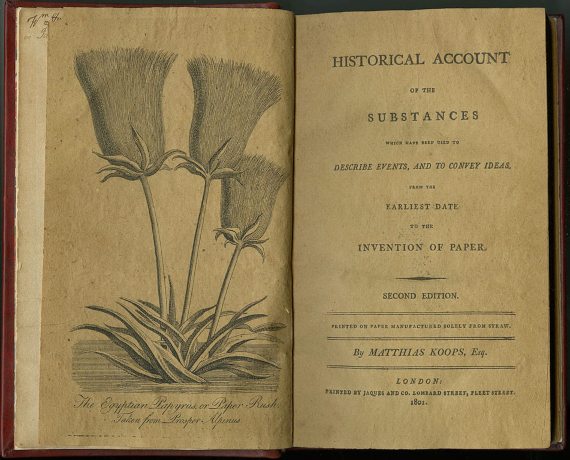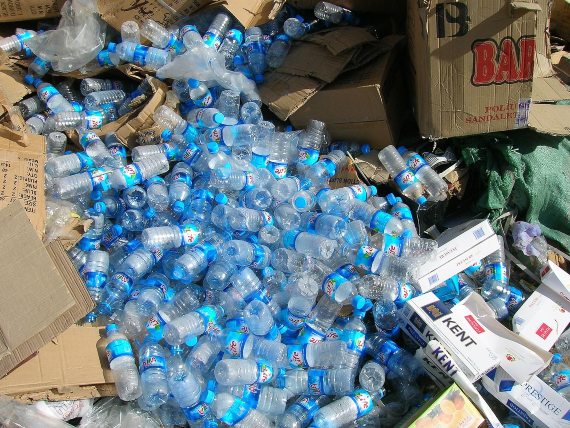Recycling may seem like a modern concept and movement, but humans have always reused things to alleviate the scarcity of resources. Recycling is “subjecting a used material to a process so that it can be reused.” The practice played a vital role during the years of the World Wars, when the disruption of trade routes and the rationing of raw materials and commodities forced the search for alternatives.
It was at that time that the first examples of large-scale organised recycling appeared, with the creation of committees, organisations and government campaigns. But the history of recycling begins much earlier. The following are some of the main milestones in the evolution of this age-old practice up to its current incarnation.
Early Evidence
1031. There is evidence that documents the existence of paper recycling in Japan, although it is assumed that their Chinese neighbours —the inventors of paper— were the first to begin recycling and that the procedure travelled to Japan from China. Due to the scarcity of plant fibres, the used paper was crushed until a pulp was obtained with which the recycling was carried out. The pulp was a greyish colour because it was made from paper already dyed with ink.
Paper recycling plants
1690. Soon after settling in the newly created town of Germantown, Philadelphia, German immigrant and paper manufacturer William Rittenhouse purchased 20 acres of land to build the first paper recycling plant in the New World, just two years after the first similar plants in England became operational. Old rags and pieces of linen —the fibre that was the main raw material for making paper in England and its American colonies— were collected by wagons and transported to the plant. There they were sorted, submerged in tanks of water and then beaten in mills until pulp was obtained, which was later placed in a mould and left to dry to obtain the strips of paper. These were destined for local printers and those in neighbouring cities such as New York. For the next 40 years, the Rittenhouse plant was the only one operating in North America.
First patent for a recycling process
1800. The English paper manufacturer Matthias Koops patents a novel procedure to “extract ink from paper and convert this paper into pulp.” The method devised by Koops offered, for the first time, the possibility of obtaining high quality recycled paper from wastepaper. To prove he didn’t need linen rags to make paper, that same year Koops published the first book printed on recycled paper. A year later, the entrepreneur obtained a government license to build a large papermaking factory in Millbank.

First steps in selective recycling
1874-1904. More than two millennia after Athens became the first city in the Western world to implement a “program” for the treatment of household waste —consisting of depositing the waste far from the city limits— the American city of Baltimore launched the first organised program of selective recycling, with differentiated containers for the main types of waste. In that same year, 1874, in Nottingham (England), the first incineration plant for household waste came into operation. Three years later, in 1897, the city of New York established the first materials recycling centre. The waste was collected, transported and deposited in large areas where paper, metal, carpets and fabrics, burlap bags and other textiles, twine, rubber and even horsehair were separated for later recycling and reuse. And in 1904 the first two plants for recycling cans and aluminium containers were opened in Chicago and Cleveland.
Wartime recycling
1941-1942. Recycling was also very present during more distressing periods, such as the Second World War. In 1941, the British government imposed garment rationing on its population, with a point system that assigned a value to each item of clothing. During that time, everything could have a second use; even the lace that once adorned a dress now served as a bandage. In the US, the enormous war effort sparked by its entry into the war led the Roosevelt administration to begin a campaign to urge the population to collect used cooking fat, tin cans, metals or any material that could be used to make explosives and weapons. Even Disney’s Pluto and Minnie Mouse did their bit with the short film Out of the Frying Pan and into the Firing Line, in which a voice-over said that, “a skillet of bacon grease is a little munitions factory.”
The 3 Rs
1970. This marked the first time that Earth Day was commemorated, dedicated to raising awareness of the environmental problems caused by the accumulation of waste and to emphasise the importance of recycling. This celebration marks the official birth of modern recycling (as we understand it today), as a movement for the defence and protection of the environment and for sustainability. It emerged in response to the growing throwaway culture established in the developed world since the beginning of the 20th century and as a consequence of the industrial revolution and mass production and with it the accessibility to all types of goods and products.
It is also from this moment when the logo with which recycling is currently identified is introduced and begins to be popular; inspired by the Moebius ribbon and consisting of three arrows converted into the vertices of a triangle that connects the three principles that define the movement: Reduce, Reuse, Recycle. The image was designed by Guy Anderson and originally created for a contest organised by a Chicago recycling company.
Plastic-eating bacteria
2016. Japanese researchers discover a new species of bacteria living in landfills —named Ideonella sakainesis— that feeds on the plastic of bottles and containers by secreting a pair of enzymes capable of breaking down in only six weeks polyethylene terephthalate (PET) (the polymer from which most plastic containers are manufactured). Two years later, British and American scientists managed to modify one of the original enzymes to obtain a more effective and faster version that breaks down PET in a few days. In addition, it is also capable of degrading another type of material, polyethylene furanoate (PEF), used as an alternative in the production of containers.

Both discoveries open the door to having a method to treat and dispose of plastic waste in the near future. Nowadays, they constitute one of the main environmental problems threatening the planet due to their durability and massive accumulation in the environment. The challenge now is to turn this laboratory treatment into an economically profitable large-scale industrial process.
Comments on this publication